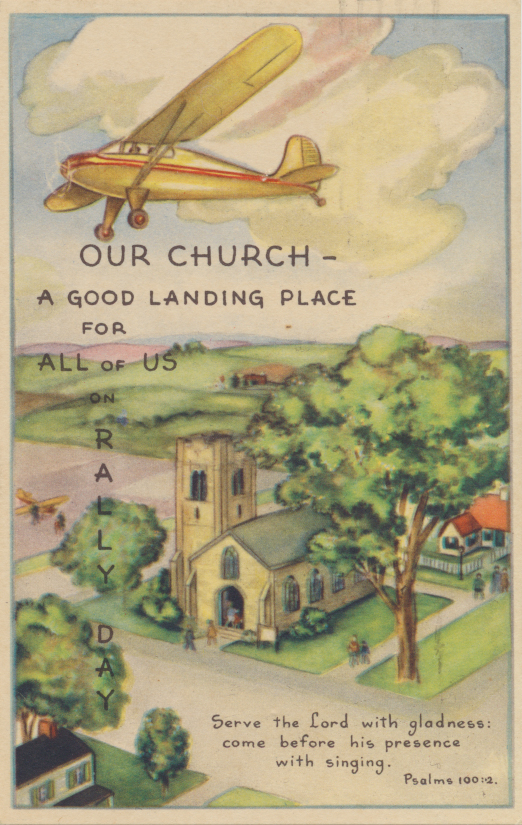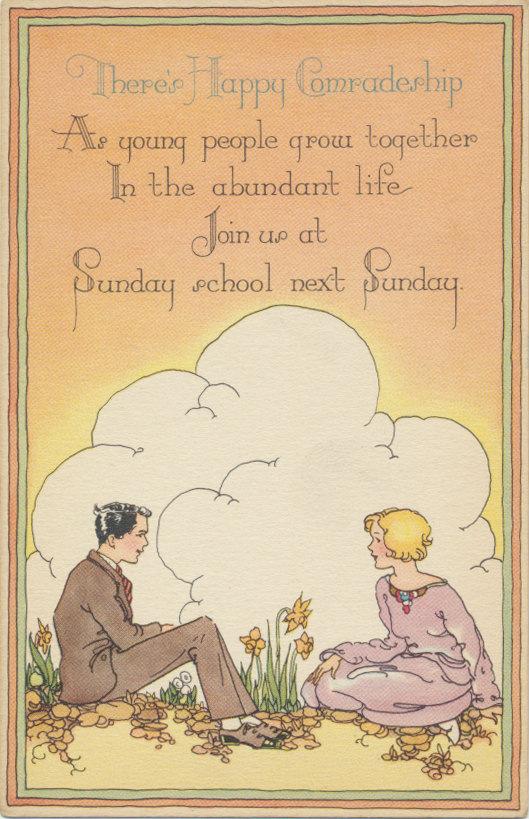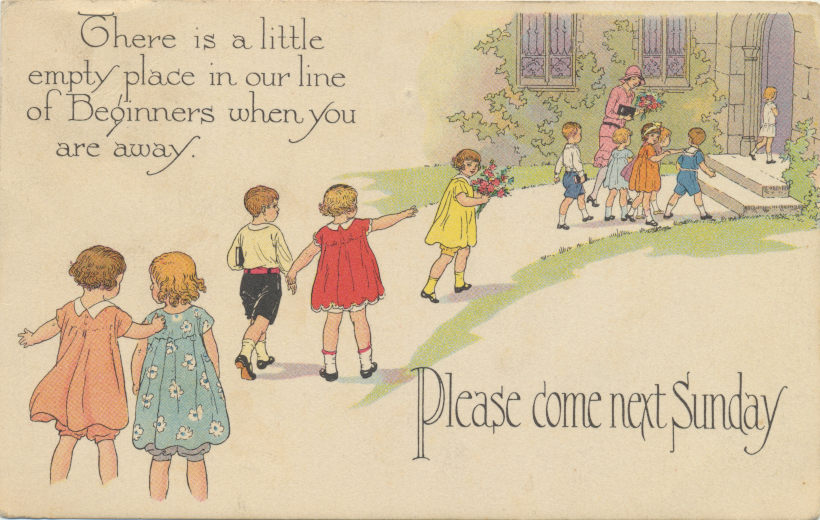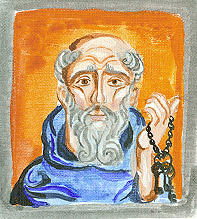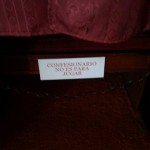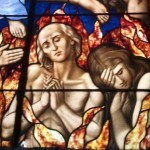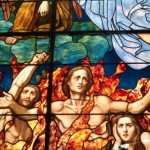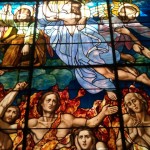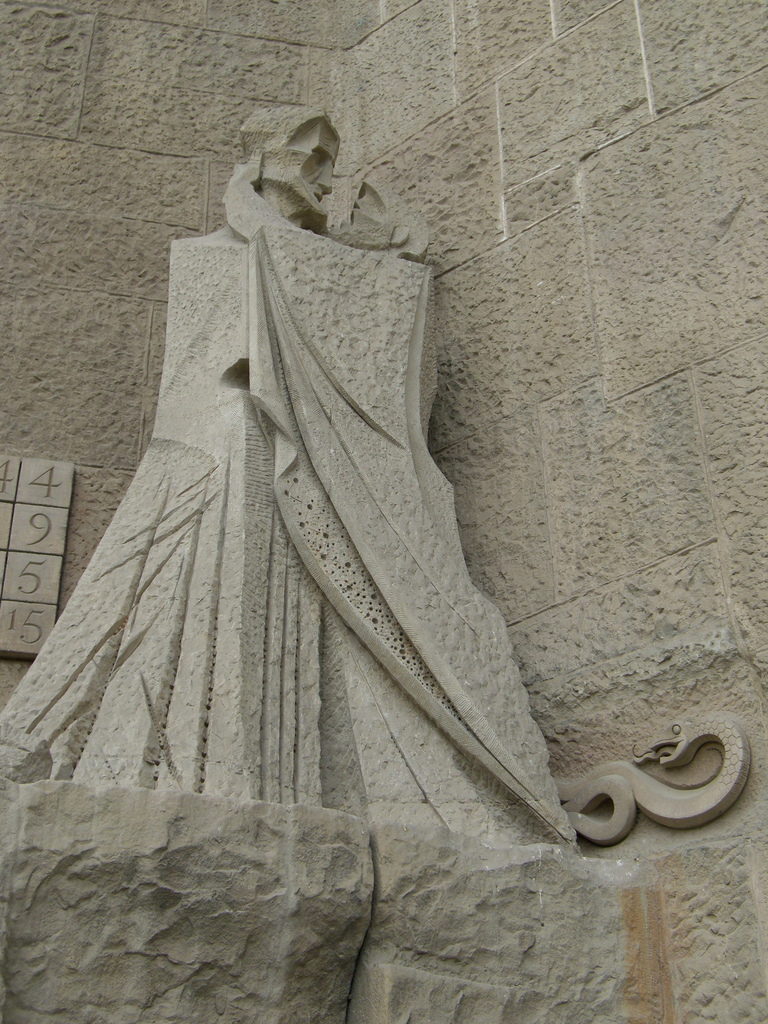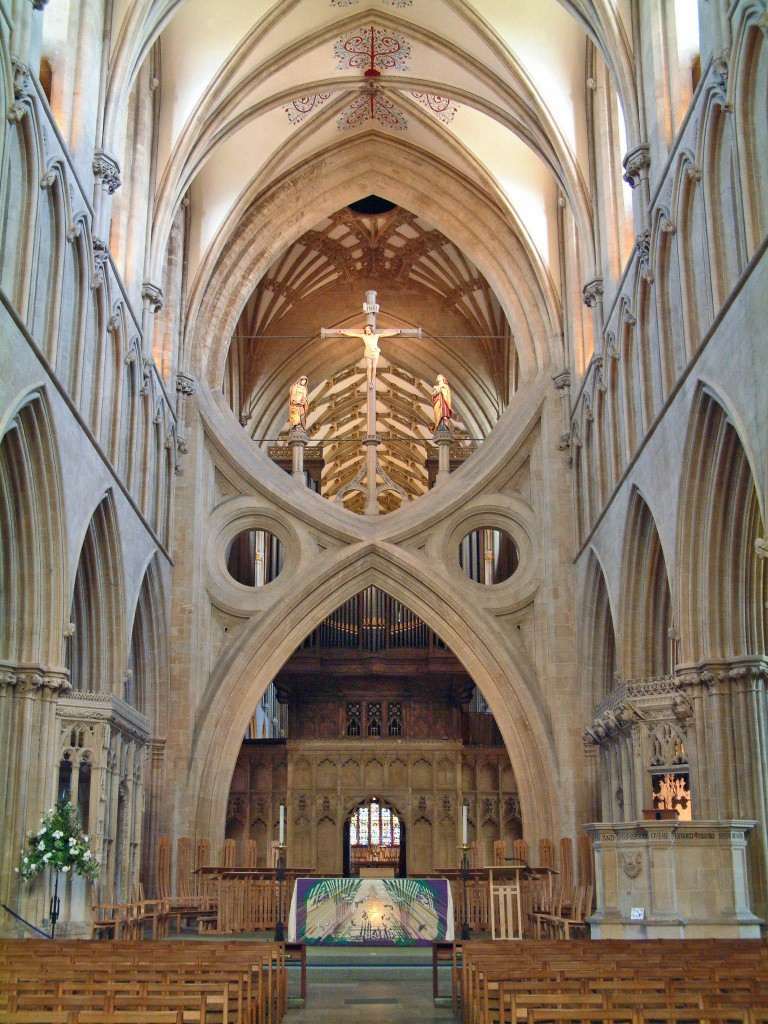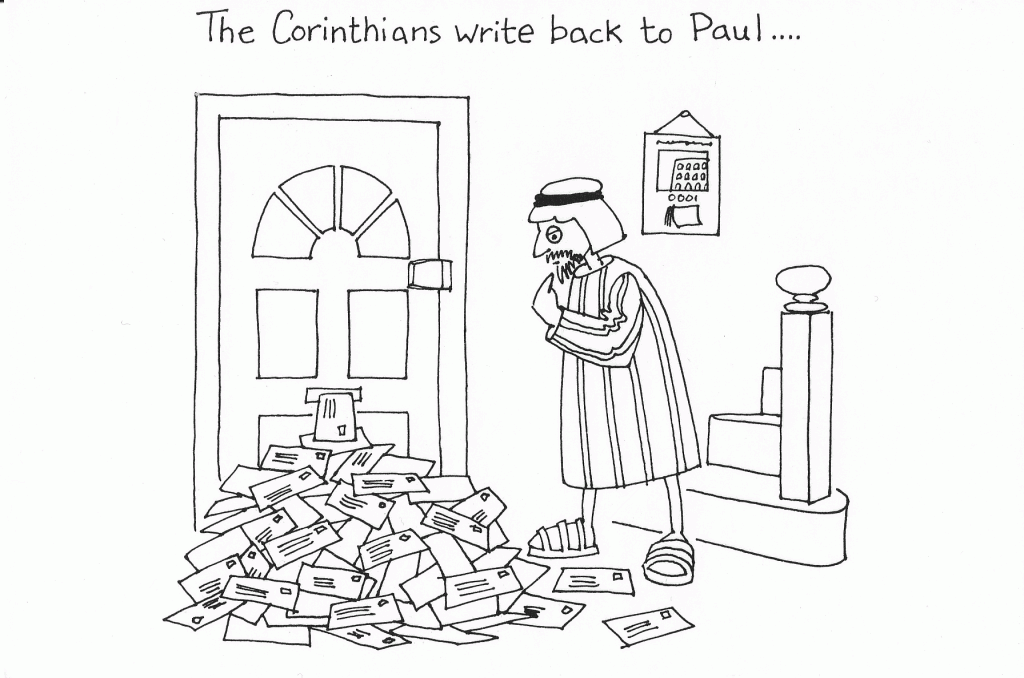It’s September, which means that Rally Day will soon be here! I have a fondness for antique Rally Day and Sunday School postcards, so I’ll break my long silence by bringing out a few I’ve picked up in the past year.
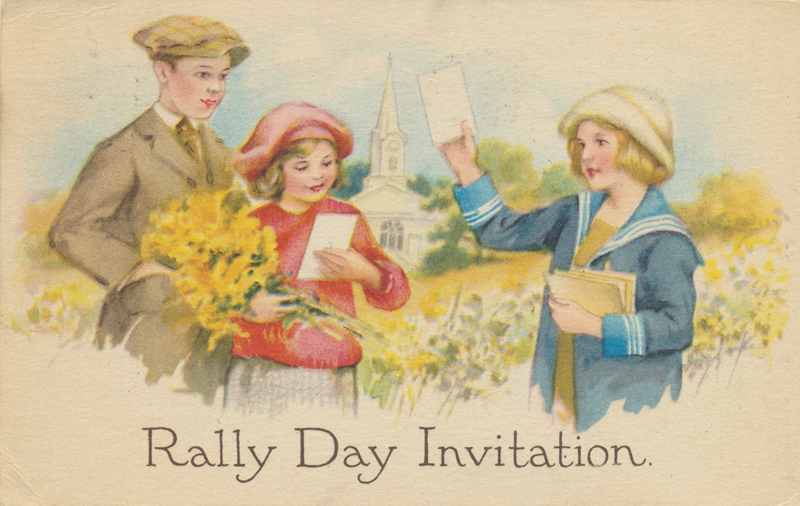
This Rally Day Invitation was addressed to “Master Francis Warnock” (does anyone still call little boys “Master?”) and postmarked September 22, 1923. The girl in the blue coat must be passing out the “Rally Day Herald,” given the message on the back.
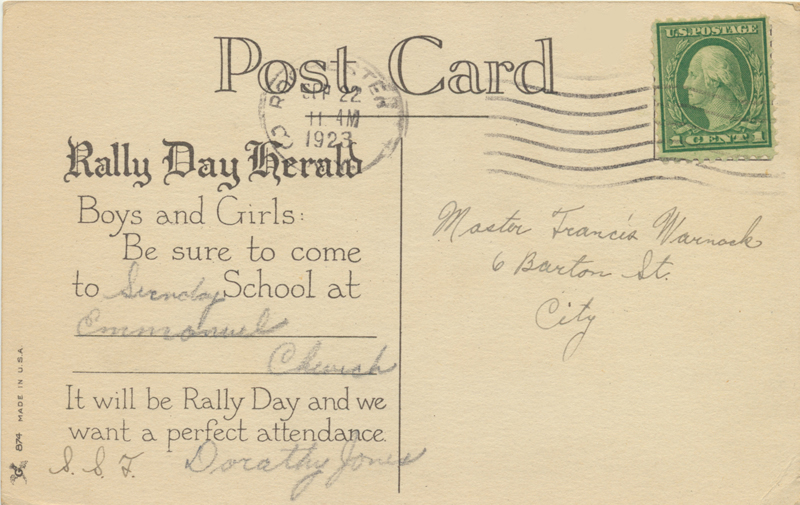
I believe this gentle scene is a companion to a Rally Day card with crystal radio headsets that I posted last year.
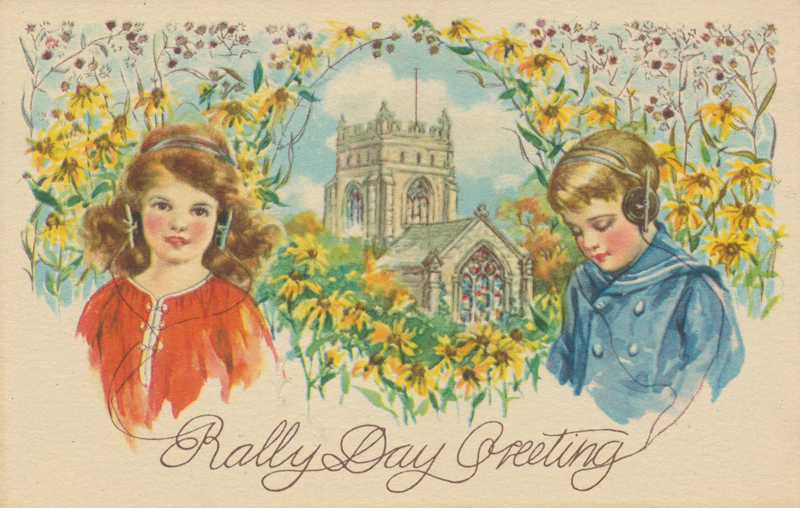
The next postcard in my ephemera haul was addressed to “Misses Elva and Florence Waggy” of Baltimore. I was quite taken with the juxtaposition of the Gothic-style cathedral and the man riding the red girder up into the sky. I’m not sure who the artist is, though I’ve seen at least one other Rally Day postcard with the same monogram (see the lower right corner).
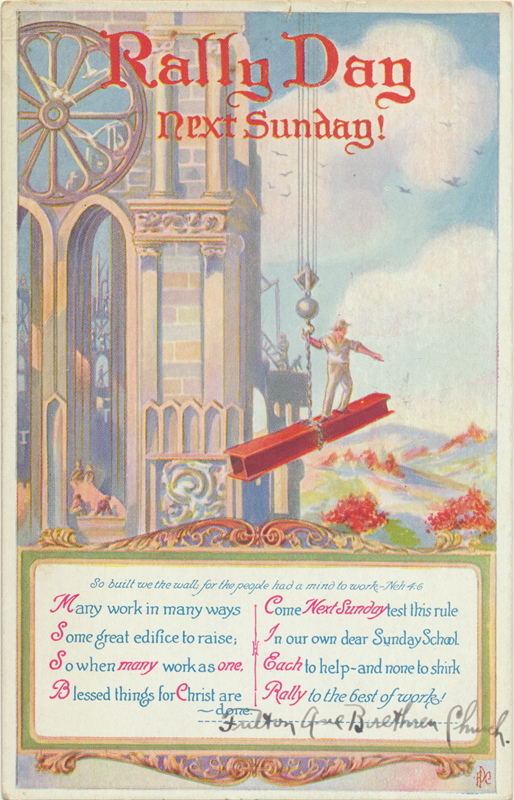
Many work in many ways / some great edifice to raise…
Each to help — and none to shirk / Rally to the best of works!
Elva and Florence apparently stayed active in the Church of the Brethren long past this Rally Day. They would later be responsible for building Nettie Memorial Chapel on Upper Reeds Creek (near Franklin, WV) in honor of a woman who I believe was their sister, Nettie.
The last postcard I have to share with you was sent from the Evangelical Lutheran Sunday School in Frederick, MD. The historic Evangelical Lutheran Church, now over 275 years old, was a pioneer in the Sunday School Movement.
This card, sent in September 1916 is noteworthy for several reasons. You can see that the message on the back was printed especially for this occasion. Most churches would fill in the particulars of their location, date, and time on a pre-printed message.
The postcard itself is an embossed design by Ellen H. Clapsaddle, the most prolific postcard and greeting card artist of her day. It has a nostalgic feel for 1916 — looking back to the late 19th century, perhaps. The woman at right looks over her shoulder to where we must be standing, as if she wonders whether we’ll follow her into the church.
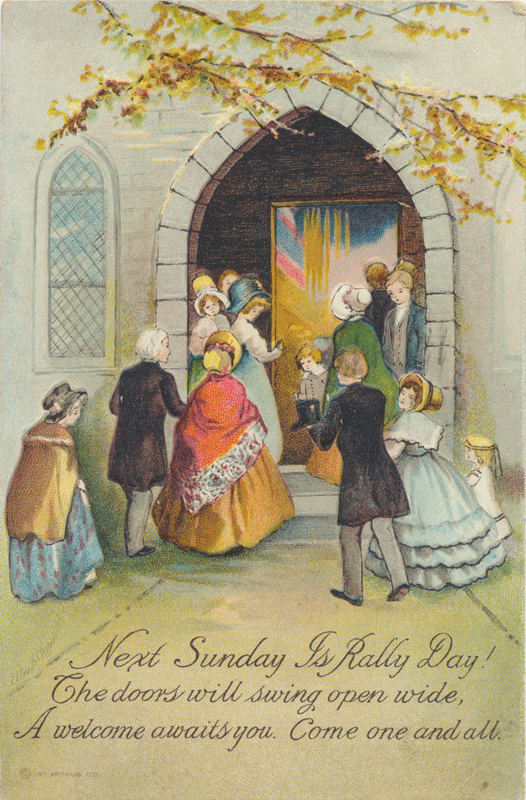
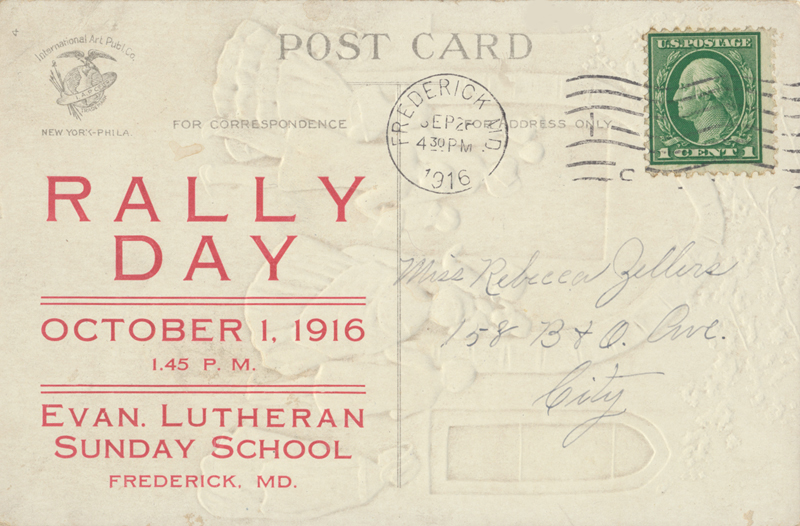
All this speaks to a well-established and well-funded Sunday School at a church that in 1916 was already over 175 years old. I wonder about the 1:45 p.m. time. Perhaps morning worship was followed by a fellowship luncheon and then the big Rally Day assembly.
So many of these early Rally Day cards speak to me of a time when parades and rallies, revivals and chautauquas were a much bigger part of American life. A time when marching bands and fiery speeches were good entertainment and a source of inspiration. While sometimes the invitation is gentle, and the spirit is warm or humorous, often Rally Day postcards’ vision is grander than “back-to-school.” Then I sense the call for Christian folk to mobilize, to Rally! and pledge themselves to the work ahead.

